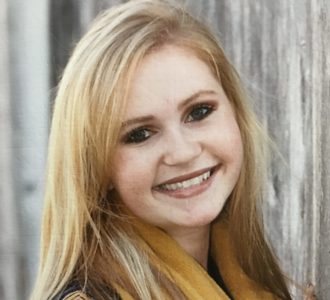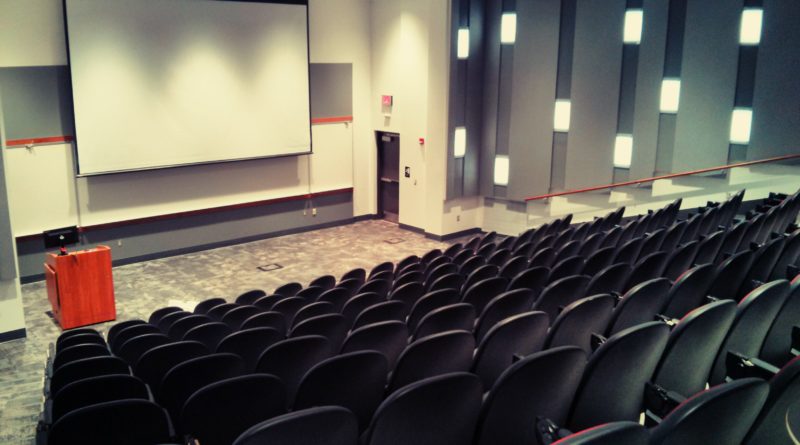Workforce Diversity and Inclusion: How does the plan impact a UD education?
Larry Burnley, Vice President for Diversity and Inclusion, discusses how the plan will impact University of Dayton students, photo courtesy of Wikimedia Commons.

Franchesca Hackworth
Online Editor-in-Chief
The University of Dayton in 2018 made a very public commitment to diversity and to becoming an anti-racist university. That commitment led to the creation of the Diversity, Equity and Inclusion (DEI) strategic plan.
The university-wide DEI strategic plan has a lot of moving parts including an Inclusive Excellence Council and nearly 11 standing committees associated with the council working to achieve various sub-goals at the university that align with the overall plan.
“It is also useful to note that ‘diversity’ in this context is ‘multi-dimensional,” President Eric Spina said when discussing the university’s strategic plan.
“Yes, it certainly includes race and gender, but also socioeconomic status, faith, country of origin, sexual orientation, (dis)ability status, status as a veteran, and more. All of these identities and backgrounds as part of UD make us a richer, more creative, and more aware university.”
>> RELATED: Diversity Survey Results Show There’s Work To Be Done
Workforce Diversity and Inclusion (D&I) in particular is a big part of the university-wide strategic plan. During the process of creating the DEI plan, Dr. Larry Burnley Vice President for D&I, President Eric Spina, and others began to question what diversity should look like in the workforce.
Members of the D&I team spent a whole year looking at best practices aimed at achieving greater racial and gender equity in the workforce before creating UD’s Hiring and Advancement final report.
One of the motivations behind diversifying UD’s faculty and staff that many people have not yet been exposed to is the direct benefits this plan has on the quality of UD students’ education.
“This is not just about social justice and closing the gap, we tie this work to excellence in terms of being in a position to deliver an excellent education for all students,” Burnley said.
“Exposure to diverse perspectives will prepare you for the world you’re about to enter as a professional. Diversity makes us better.”
Employers from corporate America are seeking out graduates who have experiences working and communicating with people from diverse cultures and backgrounds. It is crucial to the mission of the university to ensure that a University of Dayton education helps students develop those experiences.
“Greater DEI is essential for our excellence as a University, a critical part of ensuring strong educational outcomes for our students including good employment opportunities, and completely aligned with our Catholic and Marianist values,” Spina said.
>> RELATED: UD’s progress toward advancing diversity, equality, and inclusion
Workforce D&I is looking to hire an associate director for Workforce Diversification in an effort to achieve and sustain greater DEI throughout the university community.
“We need someone who this is what they live and breath,” Burnley said.
The person filling the position would not only be responsible for hiring diverse faculty and staff, but also mentoring and retaining them in order to identify barriers and sustain growth. The university hopes to fill the position by the end of March.
In addition to creating and hiring a diverse workforce, UD wants to sustain the diversity and help build the capacity within faculty and staff to handle various situations that arise and require discussions about systemic oppression.
“We’re inviting the community to be intentional in talking about these issues in workspaces, which is not an easy thing to do,” Burnley said.
“Oftentimes these issues are tied to gender, race, sexual orientation, class and how they intersect.”
Workforce D&I is creating workshops around helping people to manage difficult conversations. Department chairs in particular will go through workshops on how to handle various systemic oppression situations.
>> RELATED: UD nationally recognized for efforts against racism on campus
Since the establishment of Workforce D&I as part of the university-wide strategic plan, Burnely said they are seeing an increase in inquiries and requests from members of the UD community on how to handle D&I situations.
“We continue to have conversations with many individuals and groups who provide valuable perspectives and advice about how to overcome key barriers, including relative to policies, procedures, and practices,” Spina said.
The request for guidance on how to talk about and handle these situations is a promising sign that the community is feeling encouraged to start having these conversations and become one step closer to what it means to being a university for the common good.
Workforce D&I impacts members of the UD community beyond the faculty and staff.
In the eyes of the university it is in the students’ best interest to support a diverse workforce because of the vast experiences and perspectives that will arise throughout the duration of the higher education experience as a result.
“Become familiar with the commitments that we’re making. Hold us accountable,” Burnley said when asked what students can do in regard to the Workforce Diversity and Inclusion mission.
Burnley encourages students to create spaces to talk about their mission, form coalitions, and let the council know if you’re not satisfied.
“We’re all here to provide you with the very best education, that’s why we exist.”
For more campus news like Flyer News on Facebook and follow us on Twitter (@FlyerNews) and Instagram (@flyernews)

